
Ways To Reduce, Recycle and Reuse — Saving Energy & Money While You Practice
"Going Green" doesn't necessary involve replacing everything you own with Energy Star rated appliances and products. While making use of "energy efficient" products is certainly the smart thing to do in the long-term, there's a lot you can do just by establishing positive waste reduction and recycling habits. Here are several ways you can save money and minimize your environmental impact while in the practice room — with minimal cost or sacrifice to your comfort and convenience, you can Drum Green!
- LIGHTING
 Use the minimal amount of lighting necessary while you practice. During the day, use natural light by opening up the blinds or curtains in the room. If you are trying to keep your room cool in the summer, you'll have to decide which is generating the most heat; your indoor lighting or the sunlight coming in through the window. In the summer, use the light source that produces the least amount of heat, creating savings with your electricity bill.
Use the minimal amount of lighting necessary while you practice. During the day, use natural light by opening up the blinds or curtains in the room. If you are trying to keep your room cool in the summer, you'll have to decide which is generating the most heat; your indoor lighting or the sunlight coming in through the window. In the summer, use the light source that produces the least amount of heat, creating savings with your electricity bill.If possible, replace some or all of your incandescent bulbs with CFL bulbs (Compact Fluorescent Light). You'll want to try and find the CFL bulbs that don't contain mercury. If you have the budget and want an even more energy efficient bulb, look into LED bulbs. These bulbs also produce less heat, which is what you want when you are trying to keep a room cool, but use even less electricity than CFL bulbs, and last longer.
CFL Bulbs are three to four times more energy efficient than traditional bulbs and run 75% cooler. Although these bulbs have to warm up a bit before reaching their full brightness, the real drawback is their mercury content. Until recently, CFL bulbs contained five milligrams of mercury; higher levels as the wattage of the bulb increases.
LED Bulbs, at the present time, can cost three to four times more than CFL bulbs. The good news is you'll recoup the additional expense within two years from electricity savings, and the bulbs last for 20+ years.
Another way to reduce energy use with your lights is to install dimmers. Many old rotary dimmers were just rheostats that took the excess energy, when dimmed, and converted it to heat. Today's dimmers use a Triac Switch to cut the flow of power to a light fixture. Using this dimmer technology and dimming your lights an average of 50% can reduce your light's electricity usage by 40% percent over time ... and make your bulbs last 20 times longer. If you plan to use a dimmer with a CFL bulb, make sure the bulb is rated for dimmer use.
Regardless of the lighting type, remember to turn the lights OFF when you leave the room or at the very least when you plan to be gone for an extended period of time. Not only are you saving energy, but you're also saving on your electricity bill, especially in the summer time when you are trying to cool your house.
- HEATING & COOLING
Getting the temperature "just right" in your practice room can be a challenge and rather costly. This is especially true if you are having to work with a single HVAC unit designed to heat/cool the entire house, facility, etc. Here are several simple ways you can Drum Green (save energy and money) when it comes to getting your practice room at a comfortable temperature.
Too Hot?
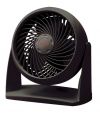 First, use your body's natural method of cooling (aka thermoregulation). Stay hydrated by drinking plenty of water. Wear loose fitting clothing to allow evaporation of perspiration from the surface of your skin. This method provides a cooling effect due to the latent heat of evaporation of water. You can increase the cooling process by increasing the air flow in the room with a ceiling fan or around your body by using a small fan blowing directly on you. Remember that hot air rises, so position the fan to draw the low (cool) air when blowing it directly on you.
First, use your body's natural method of cooling (aka thermoregulation). Stay hydrated by drinking plenty of water. Wear loose fitting clothing to allow evaporation of perspiration from the surface of your skin. This method provides a cooling effect due to the latent heat of evaporation of water. You can increase the cooling process by increasing the air flow in the room with a ceiling fan or around your body by using a small fan blowing directly on you. Remember that hot air rises, so position the fan to draw the low (cool) air when blowing it directly on you.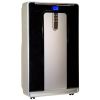 Another option to cool your practice room and not the entire house is to install a window AC unit, or use a portable, free-standing, air conditioner. Anticipate hot days by cooling down the room before you practice. Never try to speed up the cooling process by turning down the air conditioner to a very cold setting. Not only will it fail to make a difference in how quickly the room cools, but you'll also be freezing and/or wasting energy if you should forget to turn the unit back to a reasonable temperature setting. The thermostat control only determines at what temperature the unit will stop cooling, not how much cooling it will achieve within a given time.
Another option to cool your practice room and not the entire house is to install a window AC unit, or use a portable, free-standing, air conditioner. Anticipate hot days by cooling down the room before you practice. Never try to speed up the cooling process by turning down the air conditioner to a very cold setting. Not only will it fail to make a difference in how quickly the room cools, but you'll also be freezing and/or wasting energy if you should forget to turn the unit back to a reasonable temperature setting. The thermostat control only determines at what temperature the unit will stop cooling, not how much cooling it will achieve within a given time.Too Cold?
Again, stay hydrated; you always want to drink plenty of water when drumming. Note: you may notice an increase in your need to use the restroom. This is very common in cooler temperatures when we don't sweat as much. As you practice you are producing more BTUs; you're going to get warm/hot. Try wearing multiple, thin layers of clothing so you can remove layers of clothing as necessary. Some of the new synthetic materials are the best for thermal layering.
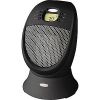 If it's still too cold in your practice room, you could invest in an inexpensive ceramic heater to only heat the area around you, as opposed to heating the entire room or house. Consider using the natural heat from the sun by opening the curtains or blinds on any windows in your practice room.
If it's still too cold in your practice room, you could invest in an inexpensive ceramic heater to only heat the area around you, as opposed to heating the entire room or house. Consider using the natural heat from the sun by opening the curtains or blinds on any windows in your practice room.
- ELECTRONIC DEVICES
Many people don't realize that ALL electronic devices have the potential of being energy wasters. Any measurable level of heat emission coming from your computer, stereo system, or power supply is wasted energy. Other than purchasing more energy efficient devices, here are some easy, practical solutions to save electricity and money.
AC/DC Adapters or Converters
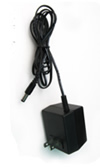 These power supplies, also known as wall warts, wall cubes or power bricks, are typically packaged with electronic devices that do not contain their own power supply, such as a metronome. While these separate power supplies keep the electronic devices they are powering cool, the AC adapter itself dissipates a lot of heat (ie. wasted energy). There's also considerable energy loss when these adapters are powered up but not supplying power to a device. Studies show that the power efficiency of these AC/DC adapters is quite poor, and in 2010 was said to have consumed at least 2% of all U.S. electricity production. The best thing we can do to Drum Green is to unplug these power supplies when not in use.
These power supplies, also known as wall warts, wall cubes or power bricks, are typically packaged with electronic devices that do not contain their own power supply, such as a metronome. While these separate power supplies keep the electronic devices they are powering cool, the AC adapter itself dissipates a lot of heat (ie. wasted energy). There's also considerable energy loss when these adapters are powered up but not supplying power to a device. Studies show that the power efficiency of these AC/DC adapters is quite poor, and in 2010 was said to have consumed at least 2% of all U.S. electricity production. The best thing we can do to Drum Green is to unplug these power supplies when not in use.Computers
Although many of today's computer have received the EPA's Energy Star rating, it's still up to the consumer and end-user to apply the technology. ENERGY STAR power management features place computers (CPU, hard drive, etc.) into a low-power "sleep mode" after a designated period of inactivity. So when you're not using your computer, put it in sleep or hibernation mode to save energy and reduce waste heat.
NOTE: When it comes to desktop versus laptop computers, the notebook/laptop is the most energy efficient. A critical factor in their design, laptops use the most energy efficient components available; displays (LCD), adapters, hard disks and CPUs, therefore consuming the least amount of energy and heat waste.
Audio & Video
If you use an A/V system for recording yourself or just audio playback for play-along purposes, there are a number things you can do to Drum Green.
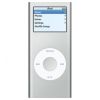 First, when playing along to tracks (ie. albums, CDs). Rather than using a full stereo or PA system, which consumes a lot of electricity and produces vast amounts of heat waste, consider using headphones with an iPod or some other portable media player. Not only are the lithium batteries found in these devices more energy efficient, but they are rechargeable ... thus saving energy and waste.
First, when playing along to tracks (ie. albums, CDs). Rather than using a full stereo or PA system, which consumes a lot of electricity and produces vast amounts of heat waste, consider using headphones with an iPod or some other portable media player. Not only are the lithium batteries found in these devices more energy efficient, but they are rechargeable ... thus saving energy and waste.If you plan to video record yourself to analyze your playing, rather than powering up a video camera, consider using a web-cam and record straight to the hard disk of your computer ... which is probably already powered up. There are going to be times where you want higher quality audio/video, like when you are shooting video for YouTube or making a DVD. But for practice purposes, these lower quality solutions will do just fine ... saving energy and money. If you are working on the practice pad and just need to watch your grip, stick height, etc., the 'old school' solution is to use a mirror. Not only can you watch and monitor what you are doing, in the moment, but you are once again reducing waste and saving energy/money.
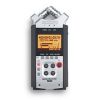 If you have the budget, there are a number of fine devices on the market that allow you to record yourself. Look into a portable digital recorder for recording audio, or a portable dv recorder for recording audio and video. You may find that many of the newer cell phones, equipped with audio/video recording capabilities, will serve your needs just fine.
If you have the budget, there are a number of fine devices on the market that allow you to record yourself. Look into a portable digital recorder for recording audio, or a portable dv recorder for recording audio and video. You may find that many of the newer cell phones, equipped with audio/video recording capabilities, will serve your needs just fine.Thinking things through, determining whether or not you really need to power-up an electronic device, can save money, energy, and reduce unnecessary waste.
Batteries
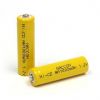 Many of the smaller electronic devices that we find in the practice room, such as metronomes and portable CD players, even the wireless keyboard and mouse for your computer, all use batteries. Rather than using disposable AA, AAA or 9v batteries, consider purchasing rechargeable/reusable batteries, and a charger. You'll save money and energy while reducing waste at the same time.
Many of the smaller electronic devices that we find in the practice room, such as metronomes and portable CD players, even the wireless keyboard and mouse for your computer, all use batteries. Rather than using disposable AA, AAA or 9v batteries, consider purchasing rechargeable/reusable batteries, and a charger. You'll save money and energy while reducing waste at the same time.
TIP: Keep an extra set of rechargeable batteries, charged and ready, so you change out your current set when they need to be recharged.
If you do use disposable batteries, don't throw them away in the trash; they'll wind up in the landfill which is bad for the environment. Instead, take the old batteries to any hardware or office supply store that sells batteries so they can dispose of them properly.
- PAPER GOODS
As musicians, especially students of music, we deal with a lot of paper products in the practice room. Everything from music paper, drum charts, method books, drum and percussion catalogs, hand-outs, worksheets — we've all got it — some more than others. The good news ... we have many ways to Drum Green by reducing, recycling and reusing paper goods in the practice room ... here's how:
Reduce. Only print-out what is necessary; keep and use digital copies as much as possible.
Reuse. Take advantage of all the one-sided printed paper by using the back-side for taking notes, rough drafts, transcriptions, etc. You can always go back later, if necessary, and make permanent, final versions on fresh paper. You can also make a permanent digital copy using your computer and a scanner.
Recycle. Don't throw paper products such as old drum catalogs, magazines, print-outs, brochures, note or music paper in the trash! Keep these items out of the landfill by recycling them.
At the present we don't have the means to recycle our old Mylar drumheads or wood drumsticks, but there are things we can do to Reduce and Reuse.






